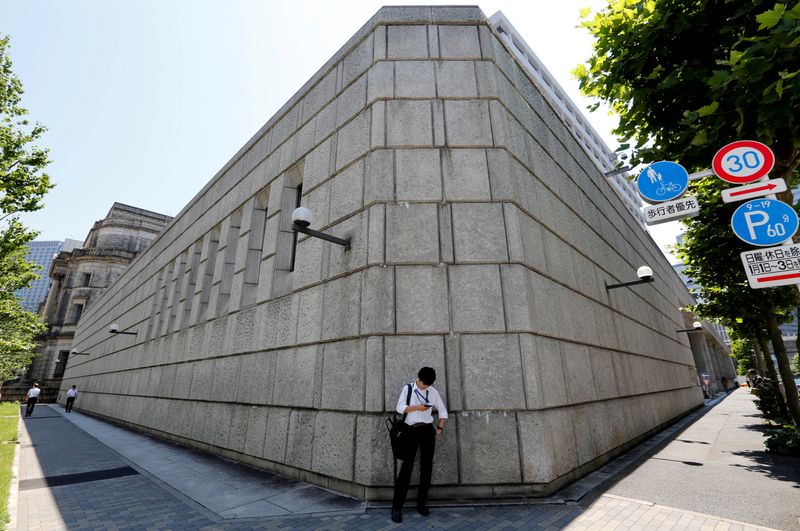By Suzanne McGee and Tom Westbrook
(Reuters) – Less than a month after a Bank of Japan interest rate hike triggered the biggest selloff since 1987 of the bellwether Nikkei 225 Index, major market benchmarks have bounced back from their lows although they have yet to recover to the levels recorded in late July.
That may be good news for some actively managed exchange-traded-funds (ETFs), market analysts said.
Index-based products still dominate the universe of Japan-focused ETFs, both in number and assets under management. But issuers of more recent and still-small actively managed ETFs say they used the selloff to do what index funds cannot: cherry pick for their portfolios at a discount the companies they believe will outperform long term.
“We think taking an active approach to investing in Japan works best,” said Shuntaro Takeuchi, manager of the Matthews Japan Active ETF. “You can take advantage of the opportunities that exist when specific stocks vary dramatically from their intrinsic value,” as happened during the selloff, he said.
The year-old fund with only $3.8 million in assets is the smallest U.S.-listed Japan-focused ETF, yet it has returned 21.7% so far this year, according to LSEG. That compares to a year-to-date gain of 11.3% for its largest peer, the $15.9 billion index-based iShares MSCI Japan ETF, and a return of 14.6% for the Nikkei 225 bellwether.
Japan is fertile ground for active stock picking because the largest Japanese stocks do not dominate major indexes the way the “Magnificent Seven” tech stocks do in the Standard & Poor’s 500 index, Takeuchi told Reuters on the latest episode of Inside ETFs.
“That leaves room for stock picking,” Takeuchi said, including in areas like factory automation, construction, technology, conglomerates and retail companies.
In April, when Rayliant Global Advisors rolled out its new Japan ETF, the Rayliant SMDAM Japan Equity ETF in partnership with Sumitomo-Mitsui DS Asset Management, it also opted for an actively managed strategy. In the four months since launch, the fund has gained about 6%, according to data from VettaFi.
“This is a market with thousands of stocks, relatively shallow analyst coverage focusing on the biggest cap companies and lots of nuance, and all of that favors active stock-picking,” said Philip Wool, one of the Rayliant portfolio managers for the new ETF.
A case in point: Japan Eyewear Holdings Co., one of many domestic companies that Wool and his colleagues believe could be poised to quietly grow in response to a strengthening yen and improved consumer sentiment.
Analysts and market strategists agreed these factors could drive higher returns on Japanese stocks once more.
For most of the last 18 months, Japan’s indexes rocketed to new highs as the yen slid and corporate governance reforms drove up dividends and buybacks. Daiki Hayashi, head of Japan sales and marketing at J.P. Morgan in Tokyo, said that now the focus is shifting to individual stocks instead of market indexes. Managers are finding stocks they believe are poised to grow more rapidly and outperform benchmarks, typical behavior in a prolonged bull market, investors and market analysts said.
“Active investors can thrive looking for those idiosyncratic growth opportunities,” Wool added. “Smaller Japanese stocks have done particularly well in the last few weeks.”
In one possible headache for investors, actively managed ETFs tend to carry higher fees than index-based funds. Rayliant levies a fee of 0.72% on its fund, while the Matthews Asia ETF has a fee of 0.79%. Meanwhile, the iShares Japan index-based fund has a fee of 0.50%.
WisdomTree Investments (NYSE:WT) still prefers to offer index-based ETFs, but builds its own quantitative benchmarks that focus on value elements, said Jeremy Schwartz, the firm’s global chief investment officer. That permits a degree of customization without allowing subjective decision-making on the part of portfolio managers, he said.
The $83 million WisdomTree Japan Hedged SmallCap Equity Fund has drawn $23 million in inflows in the last six months and is up 11.23% so far this year.
“The recent currency volatility brought a lot of short-term uncertainty,” said Schwartz. “Anytime a market goes straight up for two years or so, and then hits a bump, people worry about whether they have missed the opportunity. But this is a five- to seven-year opportunity and we’re still early in the game.”

